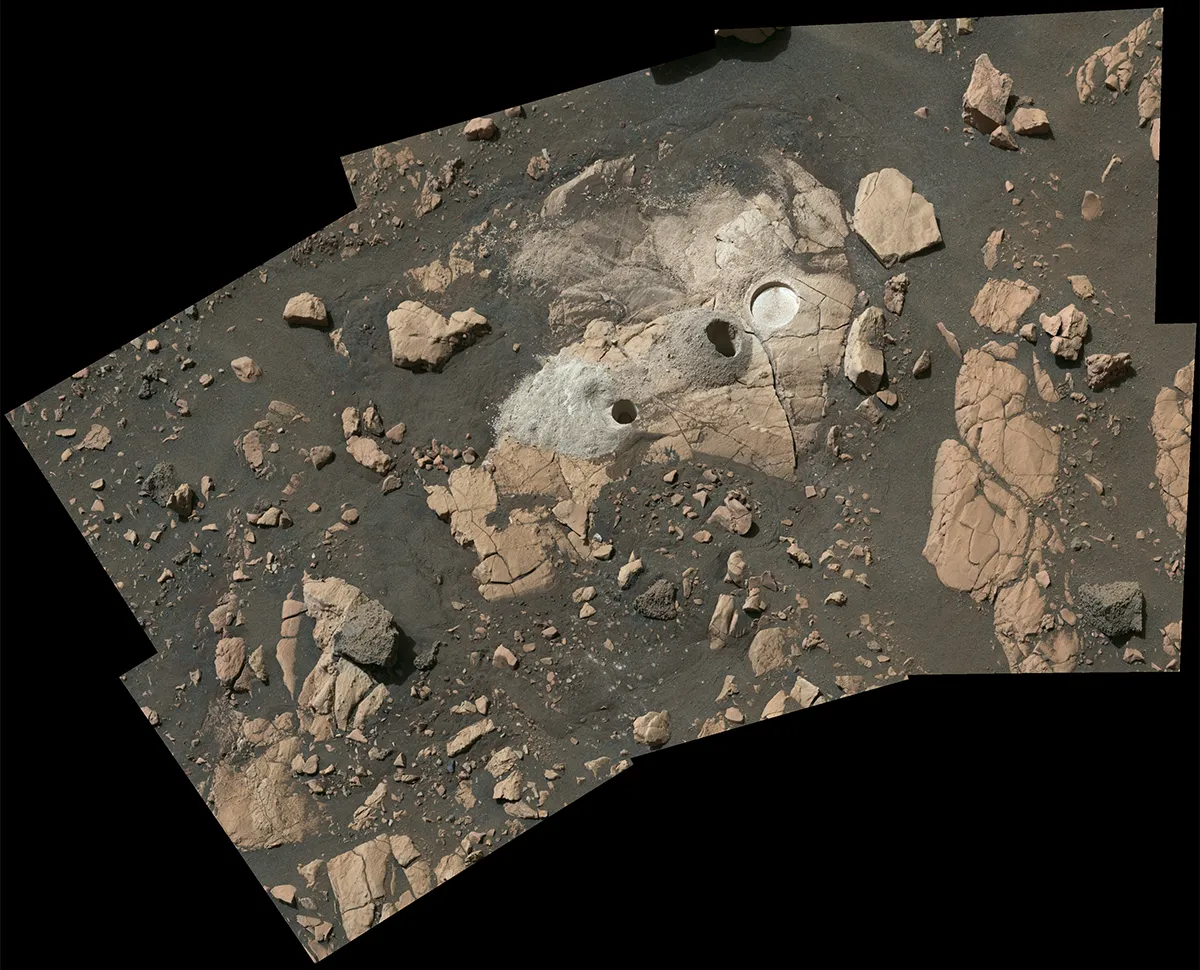As part of its continuing exploration of an ancient Martian riverbed, NASA’s Perseverance rover has collected some of the most promising samples yet in its ongoing search for signs of life on the Red Planet.
Among them are several mudstone samples collected from a one-metre-wide rock named Wildcat Ridge that are packed with organic compounds – chemicals that are essential for life.
Perseverance has been trundling around an area known as the Jezero Crater since September 2021 and has so far collected 12 samples of rock.
All of the samples it collects during its sojourn on the Red Planet are scheduled to be brought back to Earth for analysis in 2033 as part of the Mars Sample Return mission.
The Jezero Crater lies just north of the Martian equator. It is 45km wide and home to an ancient fan-shaped delta that formed about 3.5 billion years ago when rivers spilled over the crater walls and created a lake.
“We picked the Jezero Crater for Perseverance to explore because we thought it had the best chance of providing scientifically excellent samples – and now we know we sent the rover to the right location,” said Thomas Zurbuchen, NASA’s associate administrator for science in Washington.

A preliminary analysis of the Wildcat Ridge samples was carried out by an instrument onboard Perseverance called Scanning Habitable Environments with Raman and Luminescence for Organics and Chemicals, or SHERLOC.
Although evidence of organic matter has been found on Mars before, by both Perseverance and its predecessor Curiosity, SHERLOC’s analysis indicates that the Wildcat Ridge samples contain the largest number of organic compounds of any collected to date.
“In the distant past, the sand, mud, and salts that now make up the Wildcat Ridge sample were deposited under conditions where life could potentially have thrived,” said Perseverance project scientist Prof Ken Farley of Caltech in Pasadena, California.
“The fact the organic matter was found in such a sedimentary rock – known for preserving fossils of ancient life here on Earth – is important.
“However, as capable as our instruments aboard Perseverance are, further conclusions regarding what is contained in the Wildcat Ridge sample will have to wait until it’s returned to Earth for in-depth study as part of the agency’s Mars Sample Return campaign.”
Read more about Mars: